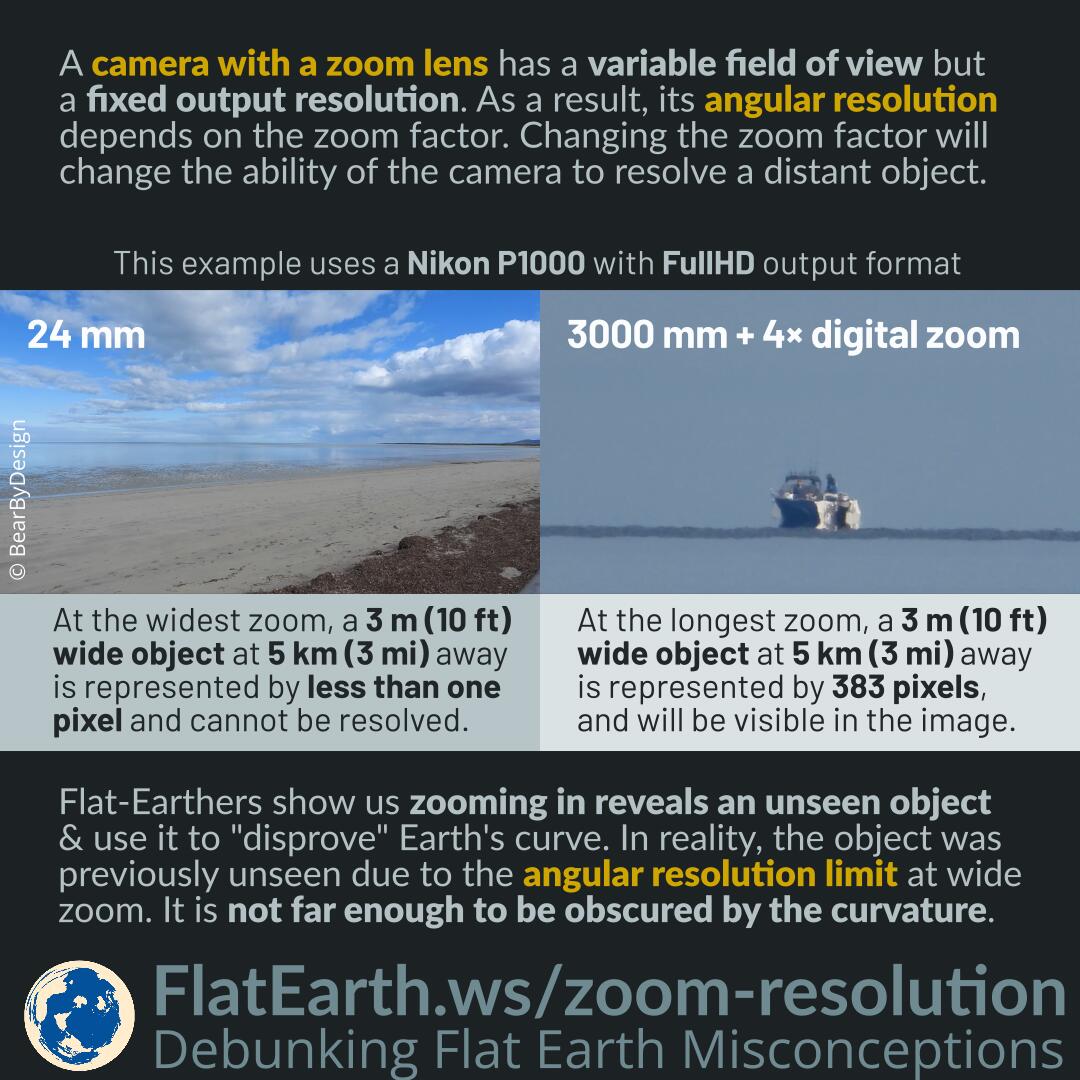A camera with a zoom lens has a variable field of view but a fixed output resolution. As a result, its angular resolution depends on the zoom factor. Changing the zoom factor will change the ability of the camera to resolve a distant object.
Flat-Earthers show us zooming in reveals an unseen object & uses it to “disprove” Earth’s curve. In reality, the object was previously unseen due to the angular resolution limit at wide zoom. It is not far enough to be obscured by Earth’s curvature.
Using the Nikon P1000 with FullHD output format as an example, at the widest zoom, a 3-m object at 5 km away will be represented by less than one pixel in the image and will not be recognizable. On the other hand, at the longest zoom, the 3-m object will be represented by 383 pixels in the image and visible.
The above explains the digital resolution. There is also optical resolution, affected by the diameter of the lens opening. At the longest zoom, the lens opens up and will have a higher optical resolution to better recognize objects with smaller angular size.
Calculation
The Nikon P1000 camera has a lens with a focal length of 24 mm to 3000mm, with 4× digital zoom. The calculation assumes the output format is FullHD (1920×1080).
At the widest zoom setting:
- Horizontal field of view: 73.74°
- Horizontal pixel resolution: 1920 pixels
- Angular resolution: 0.0384° / pixel
At the longest zoom setting:
- Horizontal field of view: 0.1725°
- Horizontal pixel resolution: 1920 pixels
- Angular resolution: 0.0000898° / pixel
A 3 m boat at 5 km away has an angular size of arctan(3 m / 5 km) = 0.0344°. Therefore, in the widest zoom, it will be represented in the image by 0.0344° / (0.0384° / pixel) = 0.9 pixel. And in the longest zoom by 0.0344° / (0.0000898° / pixel) = 383 pixel.
References
- Field of View Calculator (FoV) of a Camera and Lens – Scantips
- Image resolution – Wikipedia


